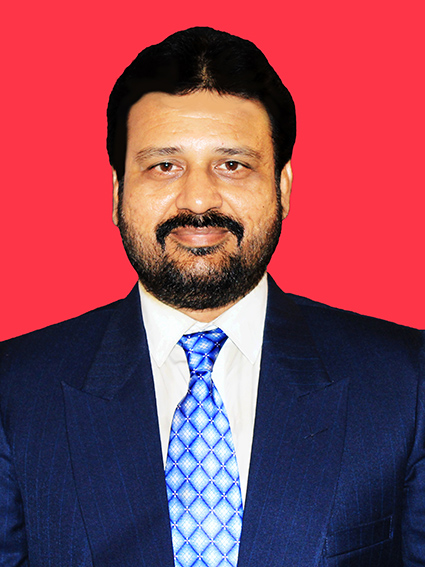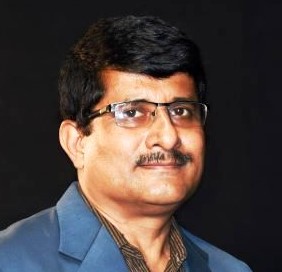Introduction to Quantum Computing
Course Attendees
Still no participant
Course Reviews
Still no reviews
Course Name : Introduction to Quantum Computing
Code(Credit) : ABC01(0-2-2)
Course Objectives
- To introduce the fundamentals of Quantum Computation by problem solving approach using Qiskit.
Learning Outcomes
- To simulate using Quantum computing with Python programming language in local computer.
- To design and validate simulation quantum circuits for various standard procedures of Quantum Computing.
- To work with the real time Quantum Computer.
Course Syllabus
Practice 1: IBM Qiskit Environment setup and Program Execution.
Practice 2: Design of Quantum Circuits.
Project 1: Carry out simple arithmetic in Python using loop, conditional statements, randomness, call and use NUMPY, MATPLOTLIB, SCIPY libraries.
Project 2:
Flip Class: Vector, Vector Space, State Vector, Hilbert Space, Quantum States, Quantum Gate.
Assignment i: Plot Bloch Sphere and represent Quantum Gate operations on quantum states in Bloch Spheres.
Project 3:
Flip Class: Eigen Values and Eigen Vectors, Hermitian, Skew-Hermitian and Unitary Matrices.
Assignment ii: Find Eigen Values and Eigen Vectors of Matrices.
Practice 3: Implementation of Single Qubit Gates-I: The Pauli Gates, Digression, Hadamard Gate.
Practice 4: Implementation of Single Qubit Gates-II: The Rϕ-gate, I, S and T-Gates.
Practice 5: Implementation of Multiple Qubits and Entangled States.
Project 4: Create a quantum circuit that produces four Bell States of a 2-Qubit system. Use the state vector simulator to verify your result.
Practice 6: Simulate Quantum Teleportation Protocol using QASM Simulator.
Project 5: Simulate Teleportation Protocol using State Vector Simulator and on a Real Quantum Computer. Obtain a comparative study.
Practice 7: Simulate Superdense Coding Protocol.
Project 6: Simulate Superdense Coding Protocol on a Real Quantum Computer and compare the results with that of obtained using Simulator.
Practice 8: Use Deutsch-Josza Algorithm to create a balanced or constant oracle of a different form.
Project 7:
Flip Class: Simon’s Periodicity Algorithm.
Assignment iii: Test Simon oracle for 2 qubits with the secret string s=11 on a Simulator and Real Quantum Computer. Obtain a comparative study.
Practice 9: Implement Grover’s Algorithm to find two marked 3-qubit states.
Practice 10: Quantum Key Distribution.
Practice 11: Applied Quantum Algorithm-I: Solving Linear Systems of Equations.
Practice 12: Applied Quantum Algorithm-II: Solving Satisfiability Problems using Grover's Algorithm.
Project 8: Solve the 3SAT problemf(x1, x2,x3)=( x1∨x2∨¬x3)∧(¬ x1∨¬ x2∨¬x3)∧(¬ x1∨ x2∨x3).
Textbook:
- Learn Quantum Computation using Qiskit, Qiskit-Text Book.
URL: https://qiskit.org/textbook/preface.html
Session Plan
Sessions 1 & 2
Practice 1: IBM Qiskit Environment setup and Program Execution.
Sessions 3 & 4
Practice 2: Design of Quantum Circuits.
Sessions 5 & 6
Project 1: Carry out simple arithmetic in Python using loop, conditional statements, randomness, call and use NUMPY, MATPLOTLIB, SCIPY libraries.
Sessions 7 & 8
Project 2:
Flip Class: Vector, Vector Space, State Vector, Hilbert Space, Quantum States, Quantum Gate.
Assignment i: Plot Bloch Sphere and represent Quantum Gate operations on quantum states in Bloch Spheres.
Sessions 9,10 & 11
Project 3:
Flip Class: Eigen Values and Eigen Vectors, Hermitian, Skew-Hermitian and Unitary Matrices.
Assignment ii: Find Eigen Values and Eigen Vectors of Matrices.
Sessions 12 & 13
Practice 3: Implementation of Single Qubit Gates-I: The Pauli Gates, Digression, Hadamard Gate.
Sessions 14 & 15
Practice 4: Implementation of Single Qubit Gates-II: The Rϕ-gate, I, S and T-Gates.
Sessions 16 & 17
Practice 5: Implementation of Multiple Qubits and Entangled States.
Sessions 18 & 19
Project 4: Create a quantum circuit that produces four Bell States of a 2-Qubit system. Use the state vector simulator to verify your result.
Sessions 20 & 21
Practice 6: Simulate Quantum Teleportation Protocol using QASM Simulator.
Sessions 22 & 23
Project 5: Simulate Teleportation Protocol using State Vector Simulator and on a Real Quantum Computer. Obtain a comparative study.
Sessions 24 & 25
Practice 7: Simulate Superdense Coding Protocol.
Sessions 26 & 27
Project 6: Simulate Superdense Coding Protocol on a Real Quantum Computer and compare the results with that of obtained using Simulator.
Sessions 28 & 29
Practice 8: Use Deutsch-Josza Algorithm to create a balanced or constant oracle of a different form.
Sessions 30 & 31
Project 7:
Flip Class: Simon’s Periodicity Algorithm.
Assignment iii: Test Simon oracle for 2 qubits with the secret string s=11 on a Simulator and Real Quantum Computer. Obtain a comparative study.
Sessions 32 & 33
Practice 9: Implement Grover’s Algorithm to find two marked 3-qubit states.
Sessions 34 & 35
Practice 10: Quantum Key Distribution.
Sessions 36 & 37
Practice 11: Applied Quantum Algorithm-I: Solving Linear Systems of Equations.
Sessions 38 & 39
Practice 12: Applied Quantum Algorithm-II: Solving Satisfiability Problems using Grover's Algorithm.
Sessions 40 & 41
Project 8: Solve the 3SAT problem f(x1, x2,x3)=( x1∨x2∨¬x3)∧(¬ x1∨¬ x2∨¬x3)∧(¬ x1∨ x2∨x3).
Case Studies
Case Studies
Our Main Teachers


Dr. Padmaja Patnaik
Associate Professor in School of Applied Sciences, Department of Physics
VIEW PROFILEDr. Padmaja Patnaik has done her PhD in Physics from IITB, Mumbai under the guidance of Dr Gautam Mukhopadhya and Dr Prabhakar P Singh of IITB, Mumbai. She focuses on the application of theory behind many scientific research and applications in the field of Physics and Material Science to solve modern day problems and foster […]
Assistant Professor and Head, Department of Computer Science & Engineering, Paralakhemundi campus. About me Experienced in both Application Development (Android and Web) and Teaching/Training. 11+ years of experience in Academia and University IT Development which includes development, and testing of modules. Worked extensively in development, design, requirement analysis and testing of projects. Strong interpersonal […]

Dr. Subrata Sarangi has a Masters’ Degree in Physics from IIT, Kanpur and a Ph.D in Nuclear Structure Theory from Physical Research Laboratory, Ahmedabad. He has 25 years’ experience in teaching at UG, PG and PhD levels. He has published over 20 peer reviewed research articles in areas of Atomic Nuclei, Nuclear Matter, Materials Sciences […]


Recent Comments